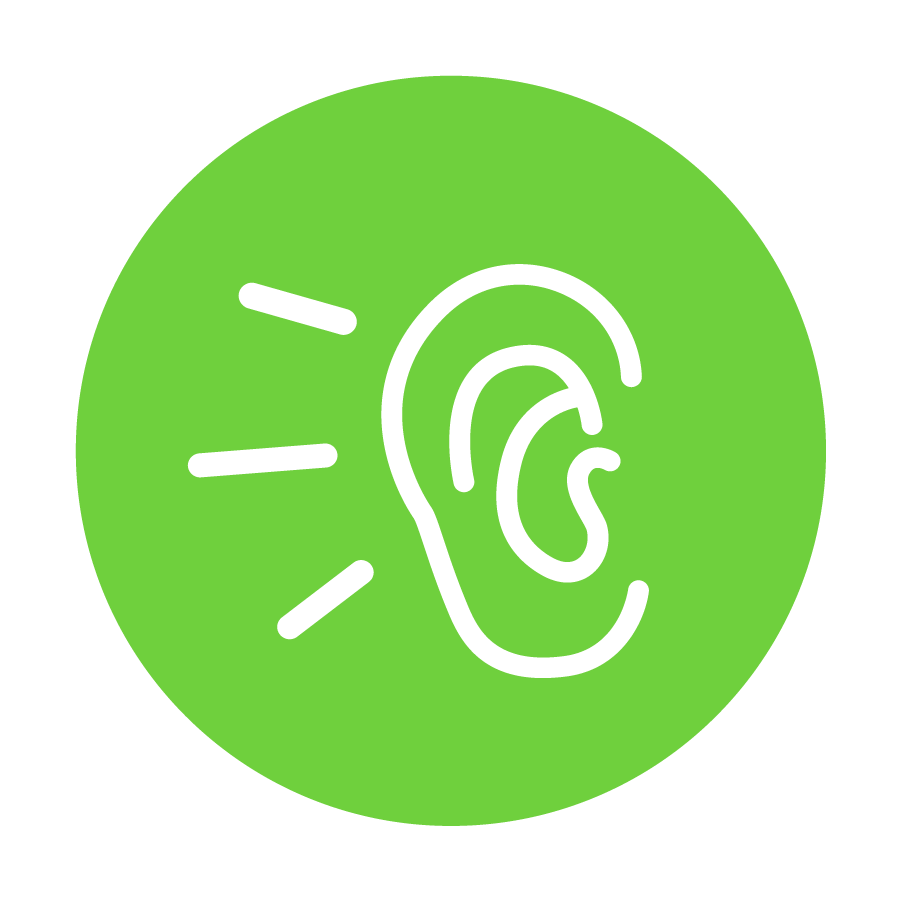What is Sensory Integration?
Sensory integration is our ability to take in and utilize information from our senses to respond to the demands of our environment.
Sensory Processing
We receive sensory information constantly from our bodies and from our environment. Our brains must be able to organize this information effectively to allow us to function successfully in our day-to-day lives. This makes sensory integration a vital part of our nervous system functioning.
When we talk about ‘sensory information’ we are referring to the information we receive from our five ‘main’ senses – touch, sight, hearing, taste, and smell as well as two other ‘hidden senses’ known as proprioception, our sense of body awareness, and vestibular, our sense of movement and balance.

Tactile
Our sense of touch, called the tactile system, gives us information such as the shape, size, and texture of objects, which helps us better understand our environment and enable our recognition of how to manipulate objects. It is also vital to the development of body schema and emotional regulation.

Proprioceptive
The proprioceptive system is our sense of body awareness. It takes the information we receive from our muscles and joints to help us identify our body’s position in relation to itself and other objects.

Vestibular
Located in our inner ear is the vestibular system, our sense of movement and balance. This system tells us about the position of our head in relation to gravity, and the speed and direction of movement.

Visual
Our sense of sight, the visual system, is critical to identifying and interpreting shapes, colors, symbols, body language, and more. In turn, our interpretations of these visual cues guides our movements and social interactions.

Auditory
Our hearing, or auditory system, allows us identify the quality and direction of sounds. It allows us, for example, to recognize without looking that a person is talking, who that person is, who they are talking to, and how far away they are.

Gustatory & Olfactory
Taste and smell, the gustatory and olfactory systems, work together to allow us to enjoy good and safe food while making us react negatively to unpleasant or dangerous sensations.

Interoception
Interoception, the eighth sense, allows our body to perceive its internal state and helps to control the way that we feel. Through this sense, we identify our emotions and bodily sensations, including hunger and feeling cold, and be motivated to seek out comfort in a timely manner.
Our eight senses work together to make up the three major components of sensory processing: sensory modulation, sensory discrimination, and praxis.

Components of Sensory Processing
Sensory modulation is our ability to take in sensory information, decide what is relevant, and to make an appropriate behavioral response.
Sensory discrimination allows us to understand the specific qualities of sensory information. For example, the texture of an object or the direction of a sound.
Praxis, in the context of sensory integration, is the ability to conceptualize, plan, organize and sequence the steps of a motor task to adaptively meet environmental demands.
What is SPD?
Sensory integration, sensory discrimination, and sensory modulation are all a part of sensory processing. Sometimes the central nervous system is unable to manage sensory information effectively to the point of delaying foundational skills and interfering with an individual’s daily life; we call this condition Sensory Processing Disorder, or SPD.
While ‘Sensory Processing Disorder’ is becoming the standard description for this condition in both medical and research circles, you may also see the terms Sensory Integration Dysfunction (SID), Dysfunction in Sensory Integration (DSI), and Sensory Processing Dysfunction (SPD); all these terms refer to the same condition.
What does SPD look like?
One person, for example, may only have visual discrimination problems, while another person may have the same problem in addition to auditory modulation difficulties. Yet another person may have praxis difficulties as a result of visual processing problems, but may not otherwise have significant visual discrimination or modulation problems. SPD is often, but not always, comorbid with other diagnoses that present with sensory related problems, such as attention deficit/attention deficit hyperactivity disorder, autism, and various learning disabilities.
More information about Sensory Processing Disorder is available on the Spiral Foundation’s SPD Toolkit pages.
What causes SPD?
Pilot studies suggest a variety of factors that may lead to sensory integration problems later in life, including genetics, prematurity, birth trauma, and environmental factors, however there is no conclusive research in this area at this time. We just don’t know yet.
More information about Sensory Processing Disorder is available on the Spiral Foundation’s SPD Toolkit pages.
The citations below lead to a few articles, some of which are available for free, on some of the currently available research:
